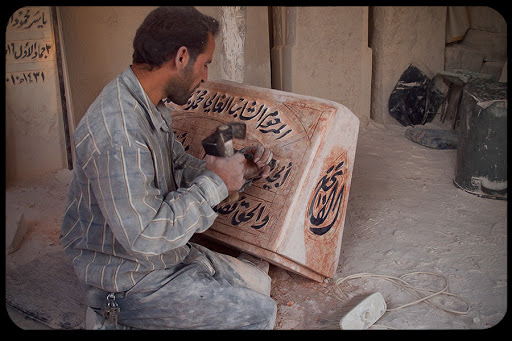It’s not easy to get a sense of the degree of American religious diversity. I’m not talking about numbers of practitioners: Everybody who identifies as anything except some kind of Christian or None of the Above doesn’t add up to much more than five percent of the population.
But that five percent may constitute the most complex gumbo of faiths in one nation since the Romans ruled their empire.
This was struck home for me this week in a couple of sentences deep in a Washington Post piece about the Navy turning down a bid for a “humanist chaplain.” The story mentions this in passing:
“Wiccans in 2007 successfully sued the Department of Veterans Affairs to get the Wiccan symbol — the pentacle — on deceased veterans’ headstones. At the time there were 38 different symbols allowed on military headstones; today there are 57, according to the Military Association of Atheists and Freethinkers, which says the agency ‘has been a pioneer in recognizing diverse beliefs.’”
I wondered what was on the list. It’s easy to find. It’s called “Available Emblems of Belief for Placement on Government Headstones and Markers.”
About half of them represent various sorts of Christianity, mostly with crosses: Latin, Presbyterian, Russian Orthodox, Episcopal, Serbian, Greek, and so on. But even among the Christian listings there are a few you may not know about.
Ever hear of the Community of Christ? It’s a Mormon spinoff, people who believe that founder Joseph Smith Jr.’s successor as prophet should have been his son, Joseph Smith III. It’s basically an LDS version of Shi’a, without the violent martyrdoms.
Jews are on the list, of course. And Muslims. And Baha’i and Sikh and Hindu. Even Zoroastrians. No surprises there. But how about Sufism Reoriented?
Plain ol’ Sufism is one branch of Islam. But this version is a more recent American creation: “Created in 1952 by Meher Baba, Sufism Reoriented is based on principles of love and service: active love for God and active service to others in God’s world…On all continents, but especially on this one, these tiny spiritual genes are being woven together in spiraling strands of light to form chromosomes within a golden nucleus of divine love at the heart of a spiritual cell.”
Atheists are represented by a stylized atom with an “A” inside. The symbol for infinity — the sideways “8” — is available for whoever is attuned to that. American Indians get the “four directions,” a feathered hoop bisected by a cross. There’s a hammer of Thor for modern followers of the Norse deities.
Several faiths of recent Japanese origin are on the list. And Eckankar and the Unification Church and Wicca and…The list is truly rich with the various ways Americans try to connect with the transcendent.
The most recent symbol may be the most curious: A sandhill crane, wings spread and head looking up. What religion is that about? According to news reports, this addition came at the behest of Linda Campbell of Portland, Oregon. Last year, she became the first military veteran to win permission to have her same-sex spouse buried in a national cemetery.
And she wanted an emblem not on the grand list: The sandhill crane. I can’t find much in the way of explanation, but the crane has long been used as a symbol of peace. Campbell was quoted in the Oregonian as offering this:
“I have no doubt our Crane will one day be joined by a flock — as she comfortably moves between water, earth, and sky, and between different worlds."
The VA has a pretty simple process for requesting a new emblem: Send an application that establishes the need for a marker, asserts why the proposed emblem “represents the decedent’s religious affiliation or sincerely held religious belief system, or a sincerely held belief system that was functionally equivalent to a religious belief system in the life of the decedent,” and include an image that isn’t owned by someone else and can be easily reproduced in stone or bronze.
Not much muss or fuss. No need for a pitched battle or public wringing of hands. You want a cross for your loved one’s grave marker? What kind would you like? You want a sandhill crane? Here you go, and sorry for your loss.
Yes, the list is a periscope into the religious diversity of those who have served in the American military. But it’s also evidence that, in these too-often unpleasant times, official respect and civility are possible, even about matters of faith.
Jeffrey Weiss is a Dallas-based religion writer. Follow him on Twitter @WeissFaithWrite.

